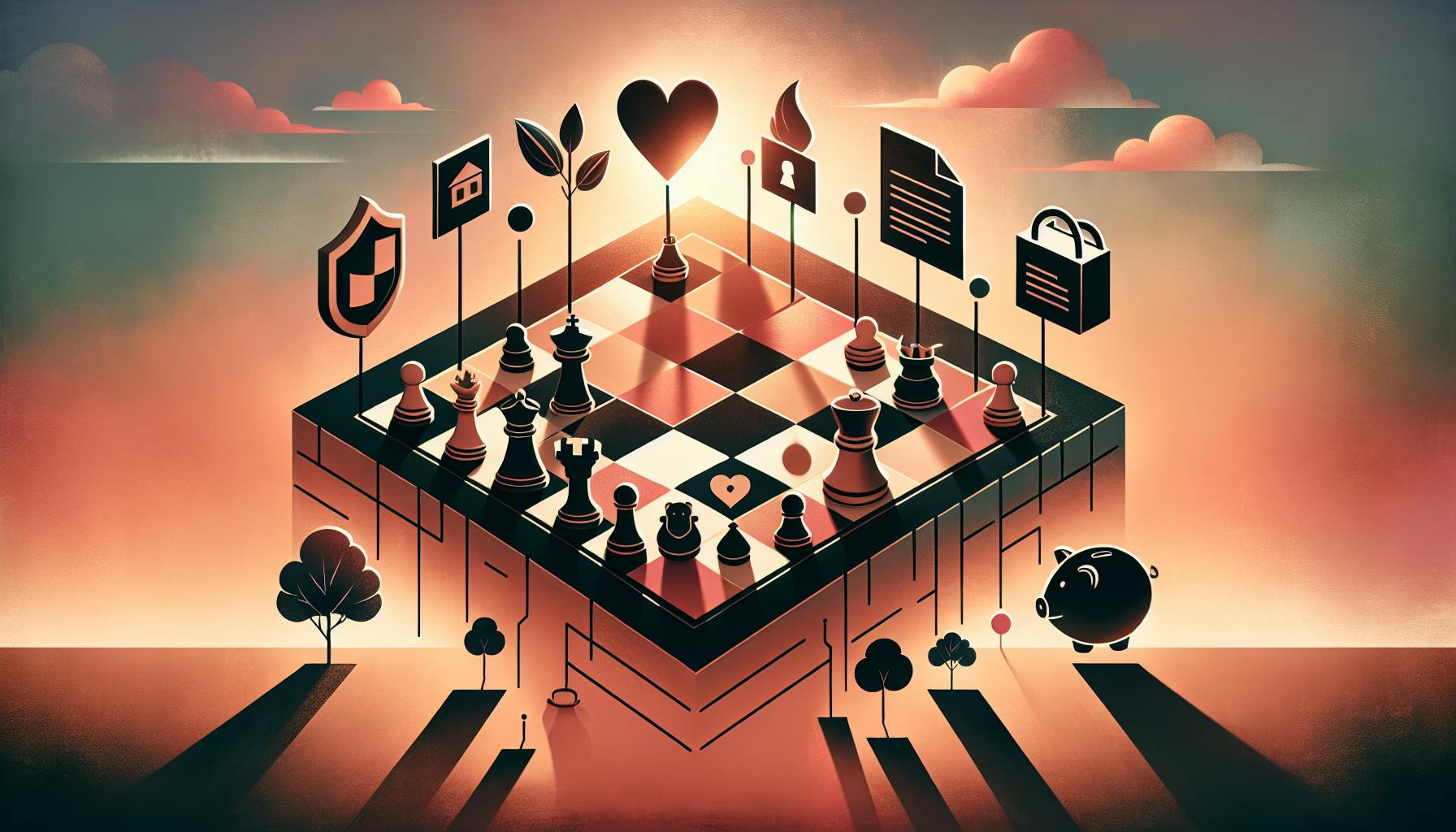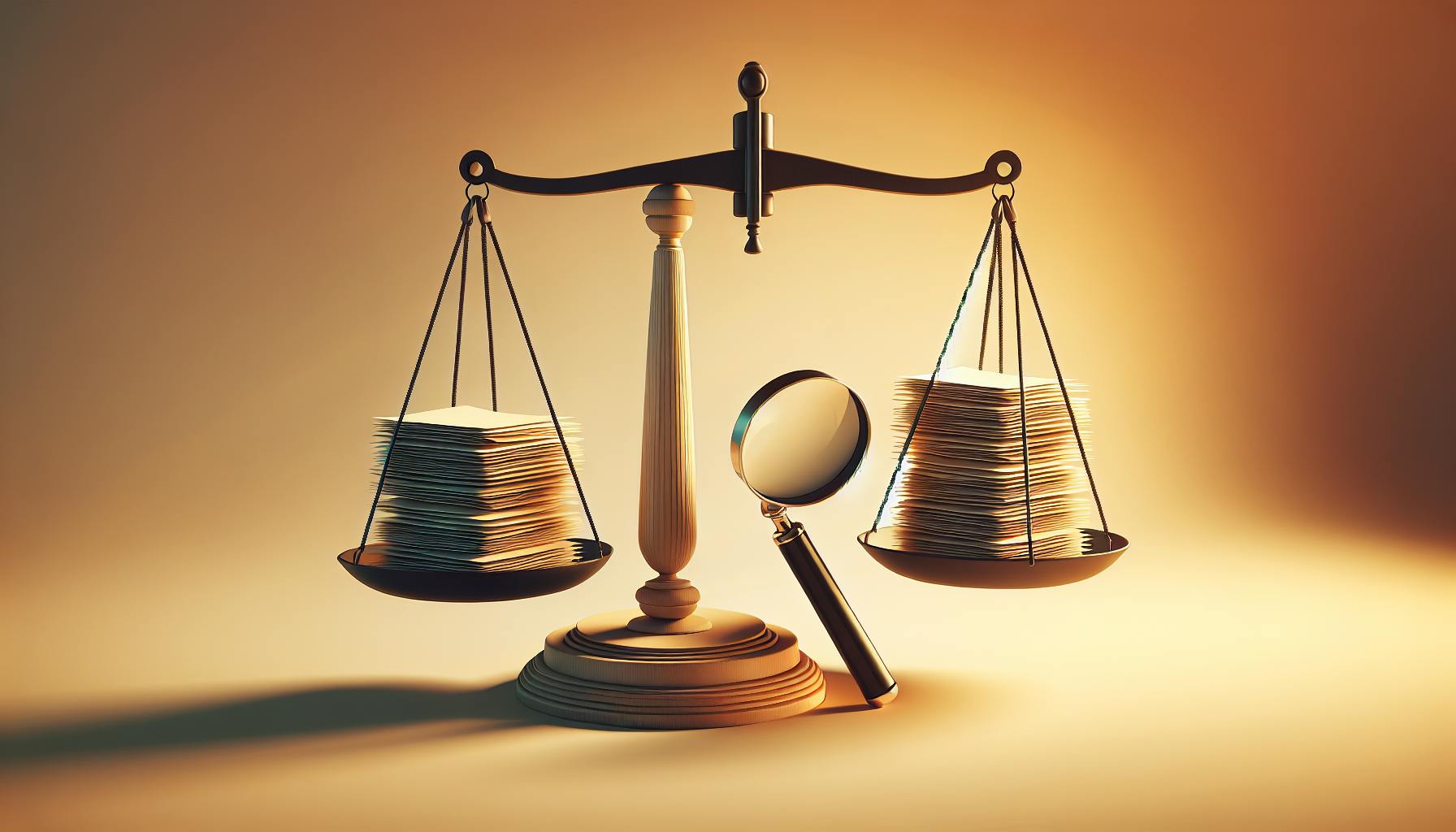Most would agree that the video of Rodney King being beaten by police was shocking and raised serious concerns about police brutality.
This article will examine the complex social and legal impacts of the Rodney King trial and LA riots, including the national debate on racial injustice that followed.
We'll explore the police brutality incident and criminal trial itself, the explosive 1992 LA riots, and the national response including civil rights advocacy and policing reforms sparked by this pivotal moment in history.
The Rodney King Incident and Its Impact on Los Angeles
The Rodney King case brought national attention to issues of police brutality and racism. While the acquittals of the officers sparked outrage, the aftermath led to positive changes. Progress takes time, but we must continue working to build trust between law enforcement and communities.
The Infamous Police Brutality Video and Its Shockwaves
On March 3, 1991, Rodney King led police on a high-speed chase in Los Angeles. After he exited his vehicle, officers kicked and beat King with batons for over 10 minutes. The incident was captured on video by a nearby resident. When aired on local TV, the brutal images shocked the nation and sparked outrage over police brutality and racism.
Charges and Trial: The Legal Battle Begins
Under public pressure, four officers were charged with assault and use of excessive force. On April 29, 1992, they were acquitted of these charges, despite clear video evidence. The controversial verdict would have lasting impacts on the city.
The 1992 Uprising: Los Angeles in Flames
After the acquittals, outrage erupted into days of rioting, looting, and violence. Over 50 people died, thousands were injured, and property damage totaled $1 billion. The unrest exposed racial tensions in the city and shortcomings in the legal system.
In the aftermath, efforts were made to rebuild damaged communities and restore trust between law enforcement and minority groups. But lasting change comes slowly. Continued work is still needed to address issues of systemic racism and prevent such tragedies from recurring.
What happened during the Rodney King riots?
The Rodney King riots erupted in Los Angeles in April 1992, following the acquittal of four police officers who were filmed brutally beating King the year before. The video footage of the incident shocked the nation and sparked outrage over police brutality and racism.
The acquittals triggered six days of violent civil unrest and rioting concentrated in South Central LA that resulted in over 50 deaths, over 2,000 injuries, and nearly $1 billion in property damage. Rioters targeted Korean-American owned businesses, with over 2,500 mom-and-pop shops looted or burned. The California Army National Guard, the 7th Infantry Division, and the 1st Marine Division had to be called in to support the overwhelmed local police.
Key events during the riots included:
-
April 29: The riots began hours after the acquittals were announced when outrage erupted into violence. By midnight, fires were burning out of control across central LA.
-
April 30: Over 1,000 buildings had been torched, and the third day of rioting was the deadliest with over 40 deaths reported. Police withdrew from South LA, unable to control the violence.
-
May 1: With LA burning, President Bush ordered 4,000 Army and Marine troops to the city. The National Guard set up armed barricades to separate riot zones.
-
May 2: Additional Army troops arrived, bringing the total to over 10,000. Police and troops slowly regained control.
-
May 3: Although sporadic violence continued, authorities declared the situation under control as rioting largely subsided.
The Rodney King riots marked one of the most violent race riots in modern US history. The extensive death, injuries, and destruction had immense social and economic impacts that resonated for years.
Who was the truck driver in the Rodney King riots?
Reginald Denny was the truck driver who was severely beaten during the 1992 Los Angeles riots. On April 29, 1992, Denny was driving his truck to deliver sand and concrete when he was pulled from his vehicle and brutally attacked by four men at the intersection of Florence and Normandie in South Central Los Angeles.
The four attackers, Damian Williams, Henry Watson, Antoine Miller, and Gary Williams, targeted Denny because he was white. They beat him unconscious and smashed his head with bricks and other objects. The horrific attack was caught on video by a news helicopter and broadcast live on television, bringing worldwide attention.
Denny suffered serious injuries including skull fractures and permanent brain damage. After recovering, he forgave his attackers and advocated against retaliatory violence. The "L.A. Four" were later tried and convicted for the attack.
The beating of Reginald Denny came to symbolize the racial tensions behind the riots following the acquittal of four LAPD officers in the Rodney King police brutality case. Denny's refusal to retaliate and his public forgiveness helped demonstrate a path toward healing after the destruction.
What led to the Los Angeles riots in 1992 Brainly?
The 1992 Los Angeles riots began after four police officers were acquitted in the beating of Rodney King, a Black motorist who was severely beaten during his arrest in 1991. A video of the incident was widely broadcast and caused outrage across the country.
After the acquittals were announced on April 29, 1992, outrage and protests began in South Central Los Angeles. Over the next several days, the unrest spread across LA County in the form of looting, arson, and violence, largely targeting Korean-owned businesses. Over 50 people were killed, over 2,000 injured, and property damage topped $1 billion.
The riots highlighted longstanding racial tensions and anger over police brutality in LA's minority communities. The mostly White police force was seen as discriminating against Blacks and Hispanics. The acquittals reinforced this view that the system was unfair. Other factors like poverty, lack of economic opportunity, and high unemployment also contributed to the unrest.
In the aftermath, there were calls for police reform and renewed commitment to rebuild LA's poorest neighborhoods. Yet decades later, tensions between communities of color and police remain in many US cities. The LA riots marked a pivotal moment that still resonates today.
sbb-itb-e93bf99
sbb-itb-e93bf99
sbb-itb-e93bf99
sbb-itb-e93bf99
Where was Rodney King buried?
On June 30, 2012, Rodney King was laid to rest at Forest Lawn Memorial Park in Los Angeles, California. His funeral service was attended by over 300 mourners, including civil rights leaders and activists.
King became a symbol of police brutality and racial injustice after a video showed him being beaten by LAPD officers after a high-speed chase in 1991. The officers' acquittal sparked the 1992 Los Angeles riots.
King struggled with alcoholism and personal issues after the riots. He died in 2012 at the age of 47, apparently by accidental drowning in his swimming pool. His death reopened discussions about police brutality and accountability.
King was buried at Forest Lawn next to his mother, Odessa. His gravesite continues to attract visitors paying tribute to a complex man who unwillingly became an icon for civil rights.
The Legal Landscape of the Rodney King Trial
The Rodney King trial focused attention on issues of police brutality and racism in the legal system. While the video footage clearly showed excessive force used against King, the acquittal of the officers sparked outrage and protests across Los Angeles.
However, rather than speculate on the details of this complex case, I believe we would do well to thoughtfully examine the broader societal issues it represents. How can we foster greater understanding and reconciliation between all people? Perhaps there are civic initiatives or community leaders working to promote nonviolence and healing that are worthy of support.
The Social and Cultural Fallout in Los Angeles
The National Debate on Police Brutality
The Rodney King case brought national attention to issues of police brutality and racism. The video footage of King being beaten by LAPD officers shocked the nation and sparked outrage, especially in minority communities who felt unfairly targeted by law enforcement.
Many felt the acquittals of the officers involved were a miscarriage of justice. Peaceful protests against police brutality and racial injustice erupted around the country, though some later turned violent. The case propelled efforts for substantive reforms in police training, use of force policies, civilian review boards, and anti-discrimination laws. It also gave momentum to racial justice movements seeking greater accountability and systemic change.
The LA Riots: A City's Anguish and the Targeting of Korean-run Businesses
After the acquittals, Los Angeles erupted in 6 days of violent riots, looting, arson and civil disorder. The unrest exposed racial tensions between African Americans and Korean merchants in low-income neighborhoods. Many Korean-owned stores were targeted, with property damage over $400 million.
The riots resulted over over 50 deaths, 2,000 injuries and nearly $1 billion in total property damage. They stand as one of the most destructive civil disturbances in US history. The City was devastated both economically and socially for years after.
Policing Reforms and Racial Justice Movements
In the aftermath, Los Angeles instituted many policing and legal reforms related to use of force, citizen oversight, sensitivity training and recruitment diversity. Several officers involved also later faced federal civil rights charges.
Nationally, the case fueled activism against racial injustice and police brutality. It inspired new legislation like 'racial profiling' bans, civilian review boards and mandatory use of dash/body cameras. The incident remains a touchstone for racial justice movements addressing systemic prejudice in law enforcement and the legal system.
The National Response to the Rodney King Trial and LA Riots
President George H.W. Bush's Reaction and Policies
President Bush condemned the violence and called for calm and unity during this difficult time. He pledged federal assistance to support rebuilding efforts in Los Angeles. The administration provided emergency relief funding and deployed law enforcement to help quell the unrest.
However, broader policy changes were limited under the Bush administration. There were some calls for the federal government to take on a more active role in addressing issues of police brutality and racism that contributed to the riots. But concrete legislative action would have to wait.
Media Coverage and Its Role in Shaping Public Opinion
The video footage of the Rodney King beating was shocking for many Americans and sparked outrage over police brutality. During the riots, extensive media coverage, especially live television broadcasts, shaped perceptions nationwide.
Some argue the media's focus on isolated violence and destruction fueled negative stereotypes. Others say it drew important attention to neglected issues. Overall, the role of media was complex - condemning violence while also calling out injustice.
Civil Rights Advocacy and Legislative Impact
The riots catalyzed advocacy groups to push for reforms. Civil rights leaders emphasized economic inequality and police-community relations as underlying factors.
In the aftermath, Congress examined policies related to law enforcement oversight and accountability. But concrete legislative action would take time. The episode fueled momentum for future reforms even if immediate policy changes were limited under the Bush administration.
Conclusion: Reflecting on the Rodney King Trial's Legacy
The Rodney King trial and the subsequent riots mark a pivotal moment in the history of police brutality and race relations in America. While nearly 30 years have passed, the issues raised by the case continue to resonate today.
The trial was controversial in its acquittal of the officers involved, sparking public outrage and calls for police accountability reform. It shone a spotlight on systemic racism and excessive force within law enforcement. The citizen video footage was key evidence that catalyzed national conversations about police brutality.
In the aftermath, positive changes emerged regarding police training, oversight, and community relations. Yet ongoing incidents of police violence demonstrate there is still further progress needed. Rodney King's beating is considered a precursor to today's police brutality videos and Black Lives Matter movement.
The case left a complex legacy, reminding us that video evidence and protests can drive reform, but institutional change often happens slowly. As technology makes injustice more visible, the public must continue applying civic pressure to hold police accountable and advance civil rights. There are still lessons to be learned from Los Angeles in 1992.


